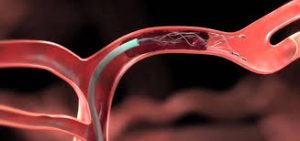Thrombectomy:

The Technology Development Board (TDB), under the Centre’s Department of Science and Technology (DST), recently announced financial support for the development of India’s first indigenous thrombectomy device for stroke care.
- A thrombectomy is a surgical or interventional treatment to remove blood clots in an artery or vein to help restore blood flow through your blood vessel.
- A blood clot, also known as a thrombus, can obstruct blood flow, leading to tissue damage or even death.
- Some of the most common places for blood clots to occur are your legs, arms, intestines, brain, lungs and heart.
- Thrombectomies are performed to restore blood flow and prevent serious consequences.
- Sometimes a thrombectomy must be performed within a matter of hours to prevent life- or limb-threatening complications from occurring.
- There are two large categories of thrombectomies:
- Surgical (open) Thrombectomy: During a surgical thrombectomy, your surgeon makes an incision to get to your blocked blood vessel, cuts open your blood vessel, removes the blood clot using a balloon and then repairs the blood vessel.
- Percutaneous (minimally invasive) Thrombectomy: During a mechanical thrombectomy, your surgeon introduces special devices through catheters that can either macerate or suction out clots from within your blood vessel.
- When there’s a residual clot left, your surgeon will infuse the area with local clot-dissolving medicines.




